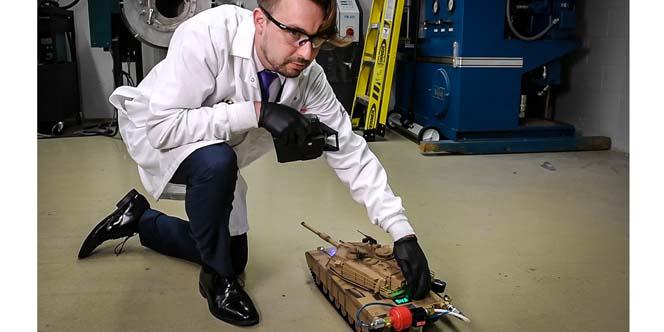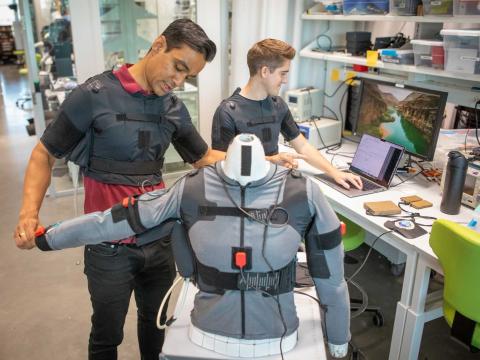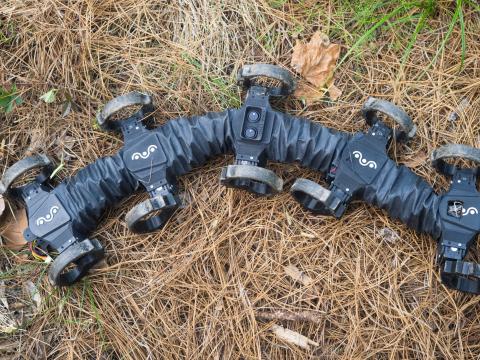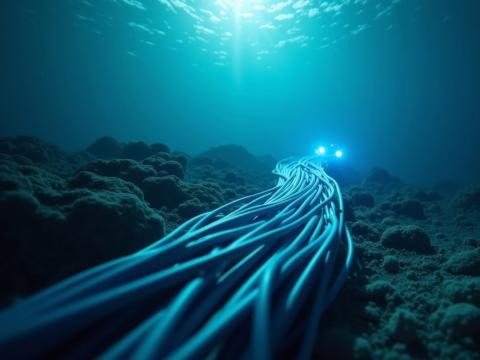Quenching the Thirst for Battlefield Energy
U.S. Army scientists and engineers recently designed an aluminum nanomaterial that produces high amounts of energy when it comes in contact with water, or any liquid containing water. Since the nanomaterial powder has the potential to be 3-D printed, researchers envision future air and ground robots that can feed off of their very structures and self-destruct after mission completion. Another possible application of the discovery that may help future soldiers is the potential to recharge mobile devices for recon teams.
The team further investigated and found that water—two molecules of hydrogen and one of oxygen—splits apart when coming into contact with their unique aluminum nanomaterial. Scientists have known for a long time that hydrogen can be produced by adding a catalyst, a substance that increases a chemical reaction rate, to aluminum. But these methods take time, elevated temperature, added electricity, and/or toxic chemicals such as sodium hydroxide, potassium hydroxide or acid.
"In our case, it does not need a catalyst," said Anit Giri, a physicist with the Army Research Laboratory's Weapons and Materials Research Directorate, said in a written announcement. "Also, it is very fast. For example, we have calculated that one kilogram of aluminum powder can produce 220 kilowatts of energy in just three minutes."
That metric doubles if you consider the amount of heat energy produced by the exothermic reaction, he said. "That's a lot of power to run any electrical equipment," Giri said. "These rates are the fastest known without using catalysts such as an acid, base or elevated temperatures."
The team demonstrated a small radio-controlled tank powered by the powder and water reaction. Moments after mixing the powder with a small amount of water, a bubbling reaction produced a great deal of hydrogen, which was then used to power the model around the laboratory.
Scott Grendahl, a materials engineer and team leader with the lab, said the discovery is dramatic in terms of what can be achieved. "There are other researchers who have been searching their whole lives and their optimized product takes many hours to achieve, say 50 percent efficiency," he said. "Ours does it to nearly 100 percent efficiency in less than three minutes."
The next steps are to document the discovery with scholarly papers and intellectual property protections, some of which are ongoing, and to coordinate further applications with scientists and engineers across the laboratory.
"We all feel pretty good that this can contribute to a new kind of research to generate power at ease and at will," Giri said.





Comments